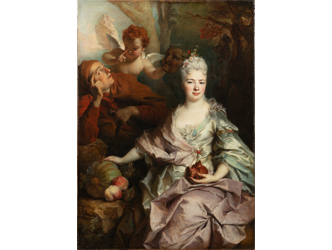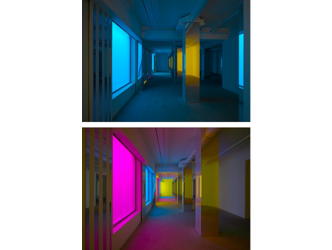It’s an image of a young man. He’s depicted in three quarter view, having taken off his shirt to reveal his robust shoulders. As though offering up another gift to the viewer, in his arms he carries a basket of fruit. This is a painting within the painting: a still life included within the portrait of the young man with the curly hair.
Caravaggio
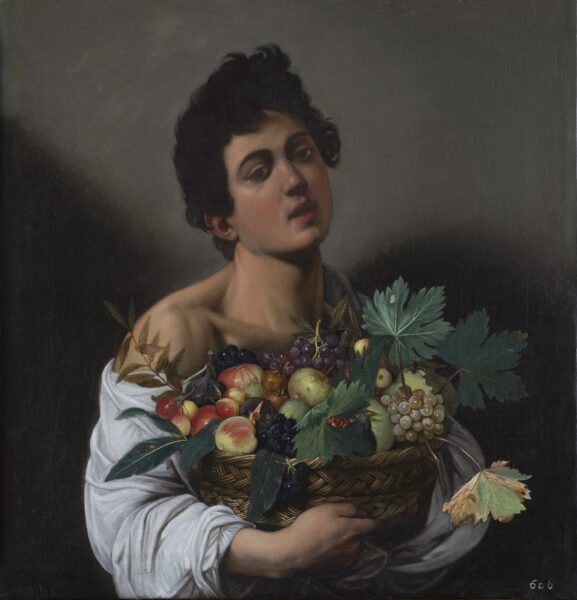
Caravaggio
His head is tilted gently back. His eyes are large and dark and his full mouth is half-open. His identity is unknown but he’s clearly stayed in people’s memories. This is the “Boy with a Basket of Fruit” painted by Caravaggio around 1596. This work, which crystallizes so many sentiments, from the frisson of desire to the observation of time passing – see the wilting leaf on the right side of the basket – used to belong in the early 17th century to an Italian cardinal by the name of Scipione Borghese (1577-1633).
Scipione Borghese
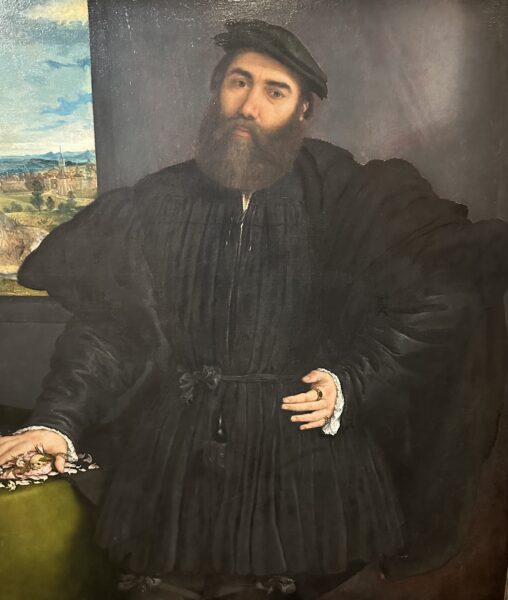
Lorenzo Lotto
He’s remembered more now for his avid taste for collecting art than for his ecclesiastical services. This single painting makes it worth the trip, and it’s exclusively on show in Paris until 5 January in the company of 43 others.
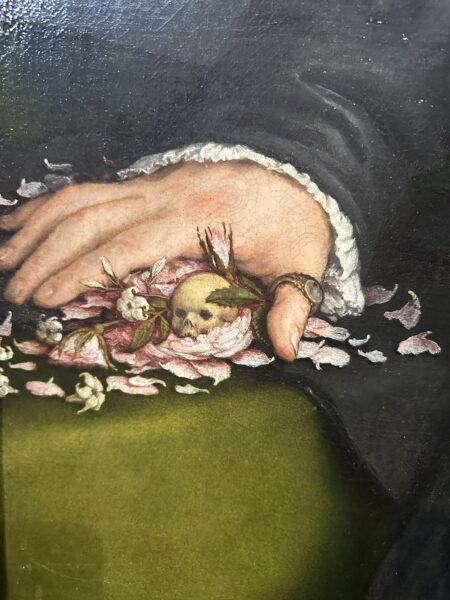
Lorenzo Lotto (detail)
Musée Jacquemart-André
The Musée Jacquemart-André, which has just reopened after a year of renovations, is presenting effectively a selection of works from the Borghese gallery in Rome, one of the hotspots for the Italian Renaissance. It is thanks to the building works, this time taking place in the Roman palace, that the French exhibition is being organized. (See here the report about the Louise Bourgeois exhibition at Palazzo Borghese in Rome). The Musée Jacquemart-André, which has just reopened after a year of renovations, is presenting effectively a selection of works from the Borghese gallery in Rome, It’s purpose is to tell the story of the illustrious tastesIt’s purpose is to tell the story of the illustrious tastes of its creator, the famous Scipione, since his descendants have kept the ensemble of paintings intact for over two centuries. In 1902 the villa and its contents were sold to the Italian state.
To appreciate is to support.
To support is to donate.
Support JB Reports by becoming a sustaining Patron with a recurring or a spontaneous donation.
Francesca Cappelletti
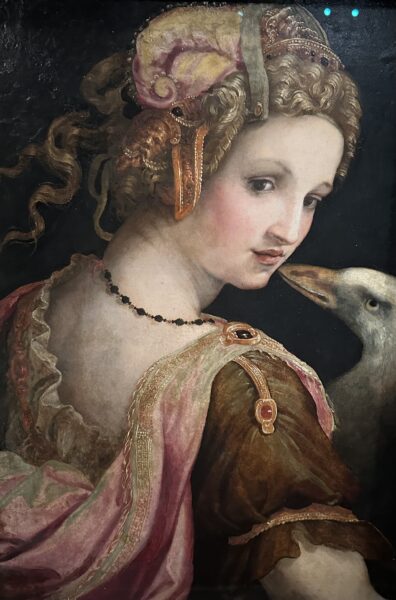
Ghirlandaio
The Caravaggio is one of its icons. “Scipione Borghese, nephew of Pope Paul V, was a great admirer of Caravaggio and he was prepared to acquire paintings wherever they could be found, because he understood the artist’s revolutionary style,” explains Francesca Cappelletti, director of the institution.
Raffaello
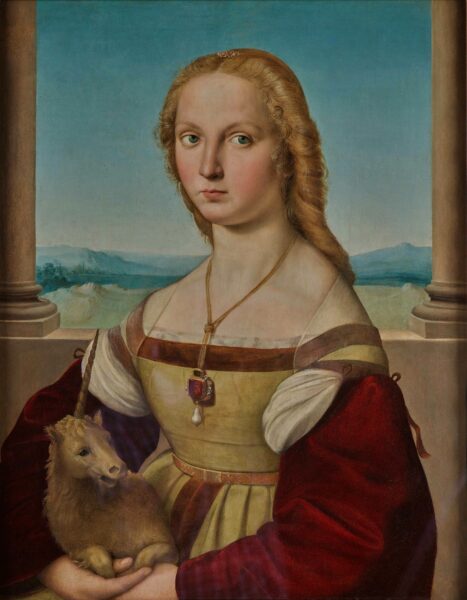
Raffaello
The other star of the collection is a young girl, more reserved than her boyish neighbour. Modest and upright, the pretty blonde carries a unicorn on her knees, a symbol of chastity. She was painted by Raffaello (Raphael) around 1506, featuring a landscape in the background marked by a large blue sky the same colour as her eyes. There can be no doubt that this is a woman who is sure of her social rank.
Tiziano
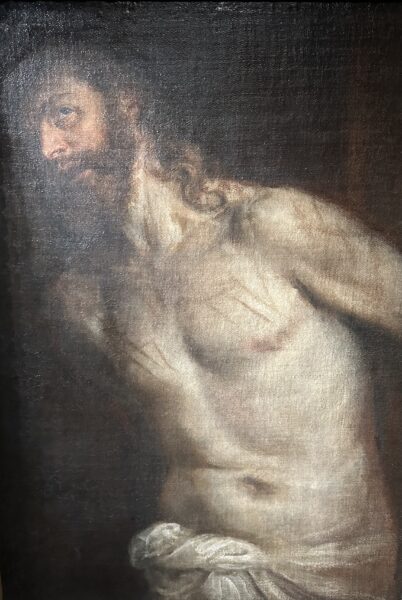
Tiziano
Further on, we go into raptures before the painting of a poor man, thin and wounded, his hands behind his back, a flagellation of Christ that is closest to the subject of pain and privation. It was the Venetian Titian (Tiziano) who produced this painting in a very modern style.
Antonello da Messina
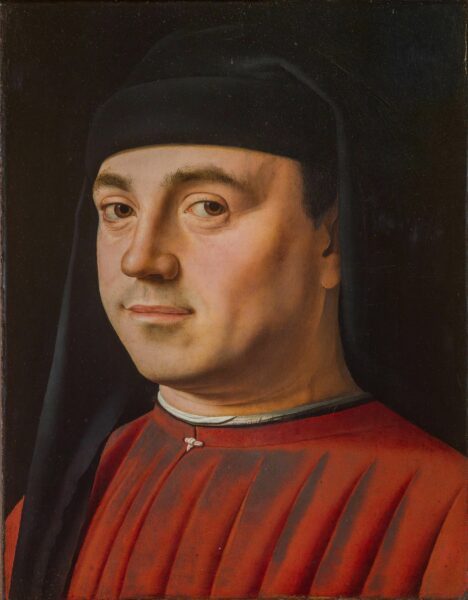
Antonello da Messina
We move from masterpiece to masterpiece right up to the hyperrealist portrait of a man by Antonello da Messina, which was nonetheless made around 1476. We’re left blindsided by the model’s enigmatic gaze. This exhibition doesn’t expound grand theories. It showcases a small number of works in small spaces, and yet it satisfies the viewer.
Succession of beauties

Rubens
At the Jacquemart-André it’s simply worth allowing yourself to be transported by the succession of beauties offered up to us. A short but intense journey to the land of the creative diversity of the Renaissance.
Until 5 January. Chefs d’oeuvre de la galerie Borghese. Musée Jacquemart-André. www.musee-jacquemart-andre.com/fr
Support independent news on art.
Your contribution : Make a monthly commitment to support JB Reports or a one off contribution as and when you feel like it. Choose the option that suits you best.
Need to cancel a recurring donation? Please go here.
The donation is considered to be a subscription for a fee set by the donor and for a duration also set by the donor.

